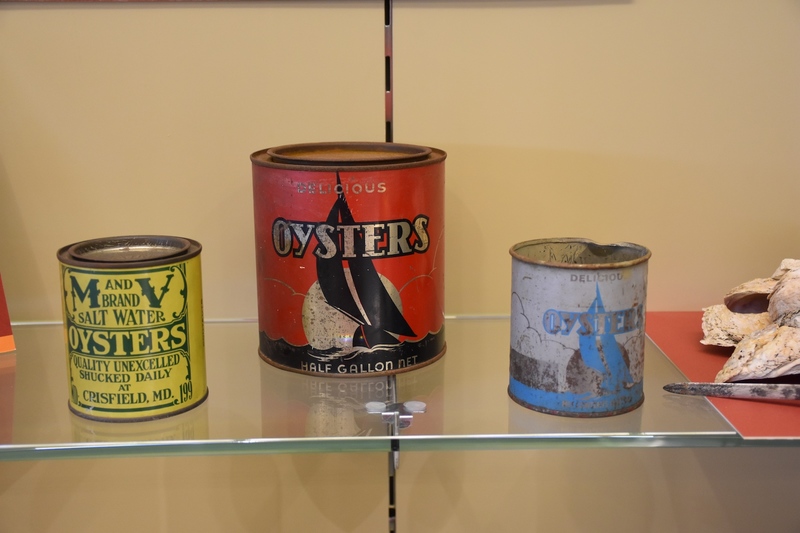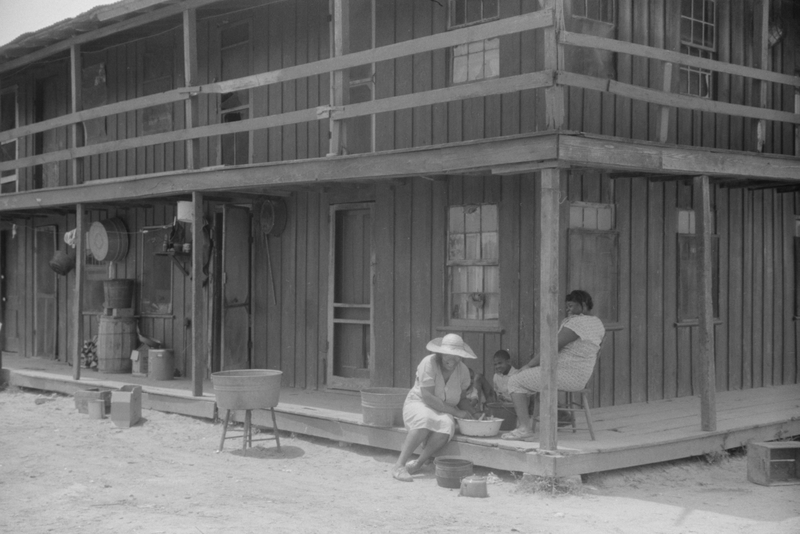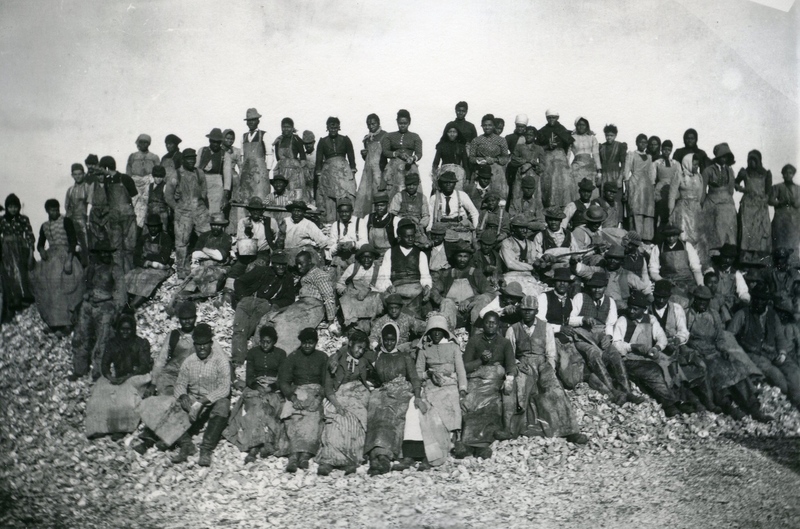Oyster Cans
Once oysters are removed from their shells, they go bad quickly. By the mid-1800s, oysters were being canned and shipped to other markets. Canneries, including the first in Delmar, Delaware, began appearing on the Eastern Shore to handle the demand for Chesapeake seafood and crops, including peaches, peas, tomatoes, and corn. African-American women (primarily) were hired as oyster shuckers in Crisfield, Maryland. By 1889, over 40 Eastern Shore canneries were listed in The Trade Directory published by the Canned Goods Packers of North America.



